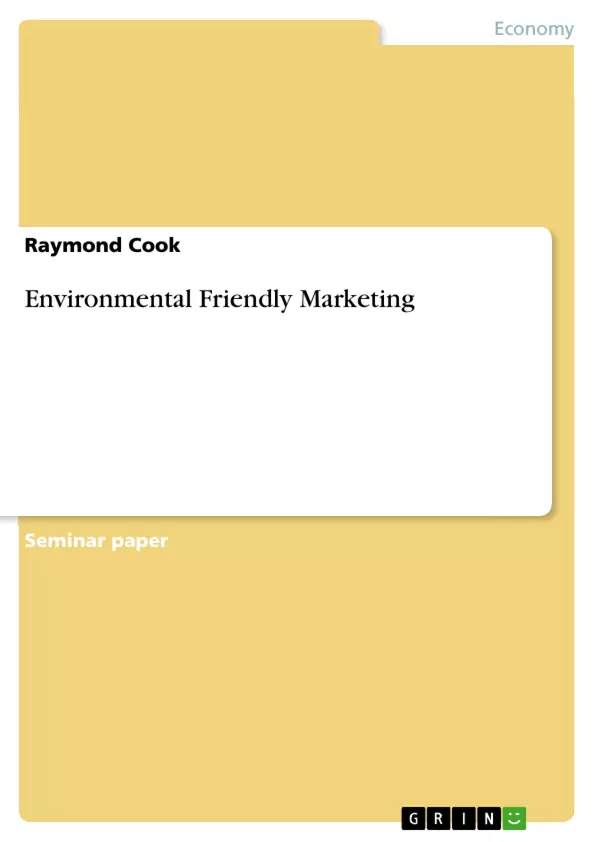The issue of environmental degradation has been a major concern in the world. United Nations Environment Programme (UNEP) has been keen on the raising public concern and awareness of environmental problems and also suggesting ways of protecting it. Many countries have also been campaigning for environmental protection. Media reporting on environmental issues has also increased greatly. Being green in marketing is a concept which advocates for marketing strategies that will help in the prevention of environmental pollution through the production, promotion, distribution and consumption of products that do not cause harm to the environment. Consumer, marketers and producers are advised to look for strategies that will help prevent environmental pollution in their daily activities. Green marketing emerged as a result of rising concern over environmental degradation, which increased worldwide interest in alternative production and marketing systems that help in the reduction of environmental pollution.
Inhaltsverzeichnis (Table of Contents)
- Introduction
- Going Green
- Production
- Distribution
- Marketing
- Products That Are Not Environmentally Friendly
- Achieving the Vision of Going Green
Zielsetzung und Themenschwerpunkte (Objectives and Key Themes)
This text aims to explore the concept of "going green" in the context of marketing. It examines the environmental impact of various stages in the product lifecycle, from production and distribution to marketing and consumption. The text advocates for environmentally friendly practices and highlights the importance of reducing pollution and promoting sustainable alternatives.
- Environmental Degradation and its Impact
- Green Marketing Strategies and Practices
- The Importance of Sustainable Production and Consumption
- Identifying and Eliminating Non-Environmentally Friendly Products
- Government Policy and Incentives for Sustainable Practices
Zusammenfassung der Kapitel (Chapter Summaries)
The introduction defines green marketing as a strategy to minimize environmental damage throughout the product lifecycle. It stresses the importance of public awareness and governmental action for environmental protection. The text then examines various aspects of "going green" across different stages.
Production discusses how companies can reduce environmental impact through strategies like waste elimination, lean production systems, adoption of new technologies, and participation in carbon-free schemes. The chapter then explores how distribution can be environmentally friendly through methods such as reducing packaging, utilizing technological innovations, and selecting shorter, less damaging distribution channels.
The chapter on marketing discusses how companies can incorporate green marketing principles into their strategies, including environmentally conscious advertising and promotional messages, pricing strategies that favor green products, and utilizing sustainable transportation options. Finally, the chapter focuses on products that are not environmentally friendly, such as scratch cards and polythene papers, outlining the negative consequences of their disposal and urging for the adoption of eco-friendly alternatives.
The concluding chapter discusses the significance of government incentives and policy measures to encourage sustainable practices, such as providing financial support for environmentally friendly products and increasing taxes on products that cause harm to the environment. It also emphasizes the need for legislation to eliminate environmentally unfriendly products from the market.
Schlüsselwörter (Keywords)
The key topics addressed in this text include environmental degradation, green marketing, sustainable production, distribution, and consumption, environmentally friendly products, government policies, and incentives. The text aims to promote awareness and action towards achieving a more sustainable future.
- Quote paper
- Raymond Cook (Author), 2011, Environmental Friendly Marketing, Munich, GRIN Verlag, https://www.grin.com/document/215672



